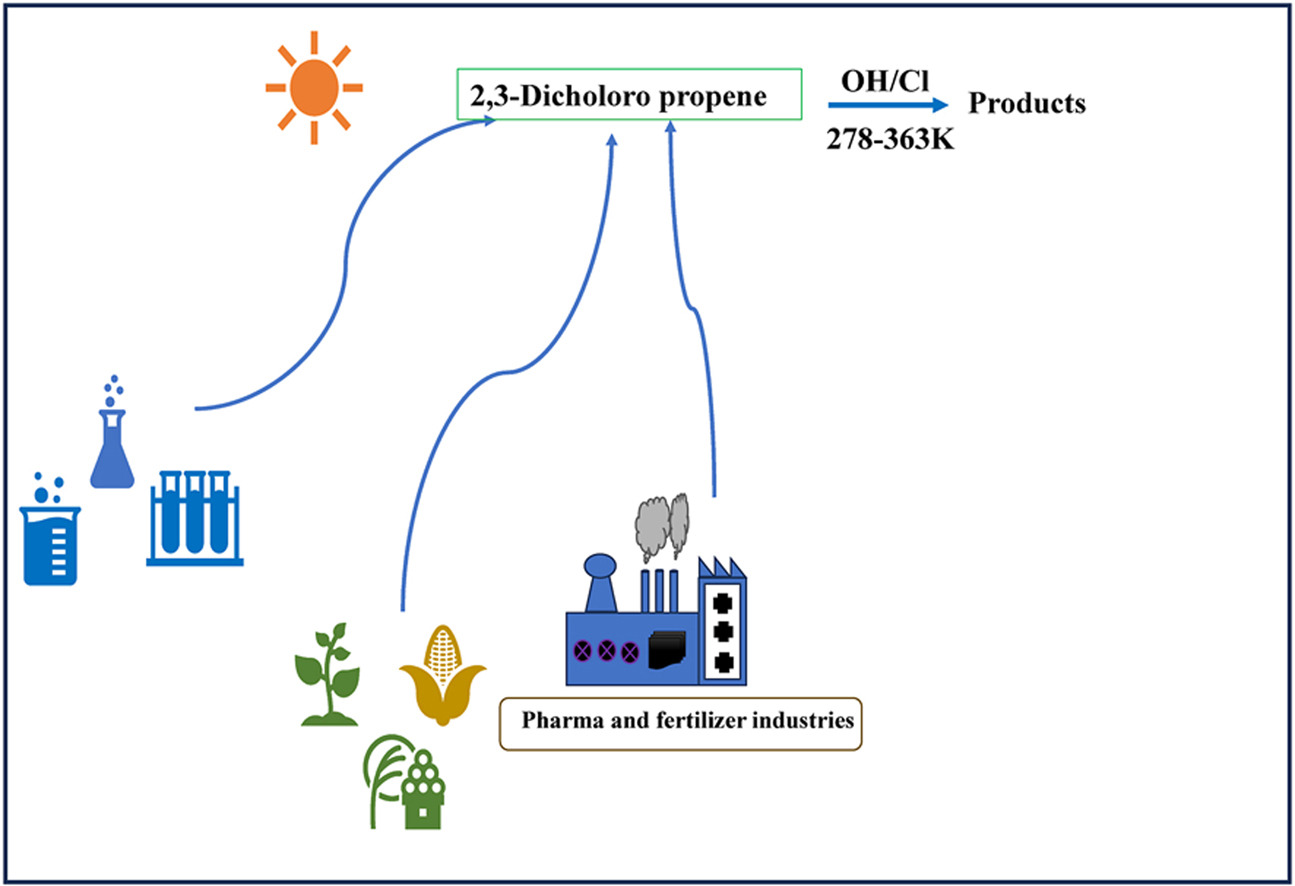Temperature-dependent kinetics of OH radical and Cl atom-initiated reaction of an important halogenated alkene, 2,3-Dichloropropene (23DCP), were investigated using absolute and relative methods over 278–363 K. Pulsed laser photolysis – laser induced fluorescence technique and relative rate method using gas chromatography with flame ionization detector were employed for studying the kinetics of 23DCP with OH radical and Cl atom, respectively. The obtained Arrhenius expressions were kOH(expt)=(4.08 ± 1.63) × 10−13exp{(1043 ± 124)/T} cm3 molecule−1 s−1 and kCl(expt)=(1.54 ± 0.24) × 10−11exp{(705 ± 48)/T} cm3 molecule−1 s−1. Computational calculations were conducted to validate our experimental kinetic results and provide new insights into the importance of a particular pathway among all based on thermodynamic parameters. The addition of OH/Cl to the terminal carbon of the double bond present in 23DCP proved to be the predominant pathway across the selected temperature range for the present study (200–400 K). The degradation mechanism of these reactions was proposed by analyzing the products with the aid of gas chromatography with mass spectrometry. Calculating various atmospheric implication parameters can help to understand how the release of 23DCP may affect the troposphere.
-
Call
-
E-mail
Journal Details
1. A combined experimental and computational investigation on the OH radical and Cl atom-initiated reaction of 2,3-dichloropropene in troposphere.
G. S. Madhu and B. Rajakumar Chemosphere, , 142566, 362

